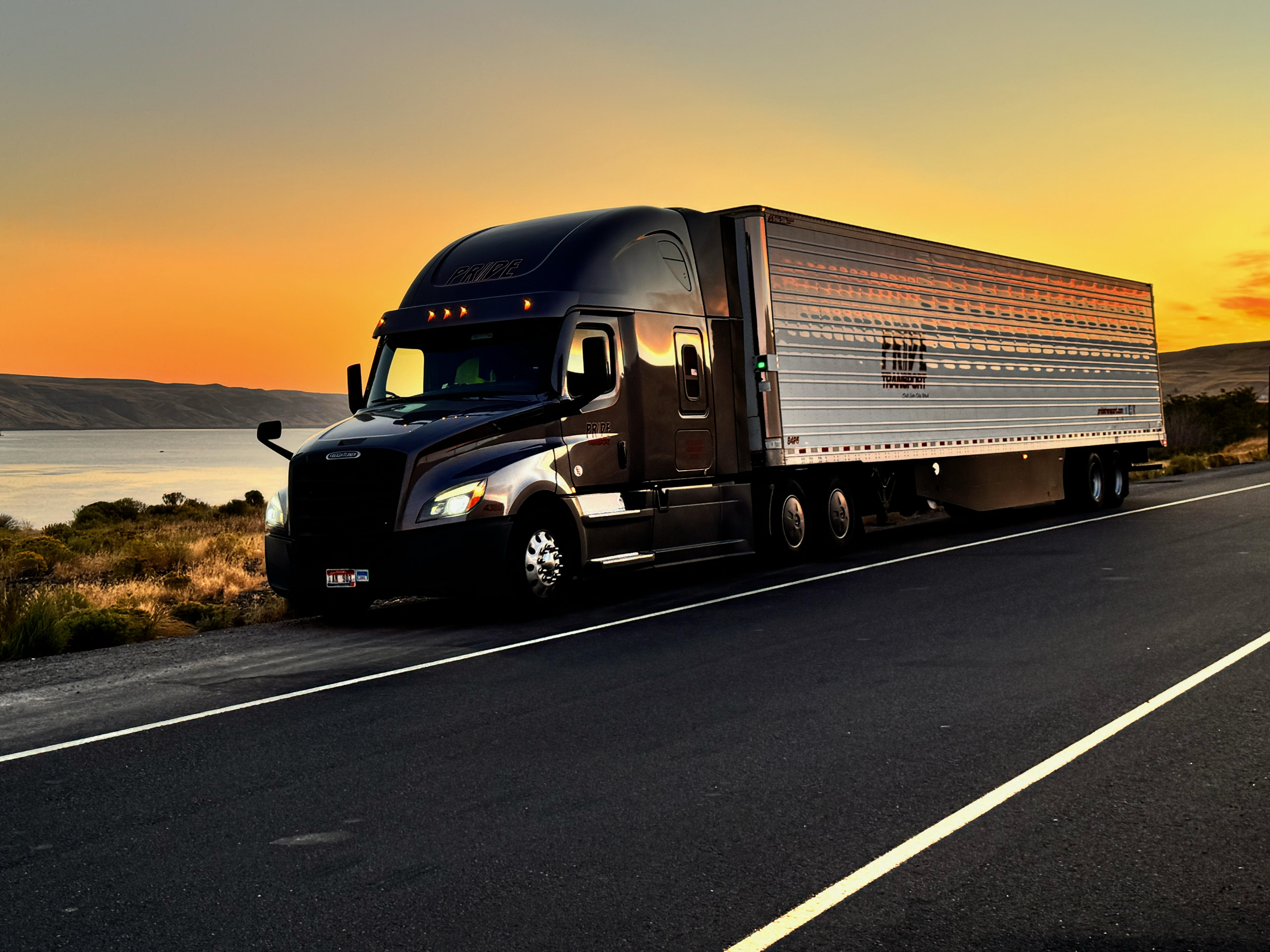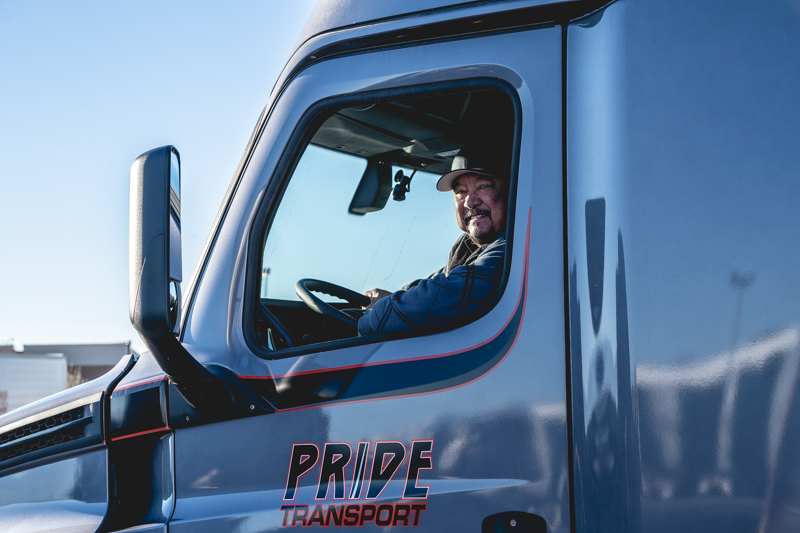by Pride Transport | Oct 17, 2024
The truck driving profession comes with a lot of terminology. From identifying different parts of the truck to memorizing the industry’s regulatory bodies, truck drivers learn a dictionary’s worth of terms to do their job well.
But the language of trucking goes beyond formal terms and acronyms. Over the years, drivers have developed their own lingo to talk with others who understand what life is like out on the road. We’ve rounded up some of the most common terms and insider jargon so you can join the CB chatter on your next long haul.
Describing Different Truck Types
Correctly naming different types of trucks makes it easier to tell other drivers what’s happening around you, or to let them know what you’re currently doing. Using this information, other drivers can offer advice or assistance, such as sharing the rest stops or fueling stations that will accommodate your vehicle size. Here are some of the trucks you’ll commonly see on your route:
Bobtail: Driving a road tractor without a trailer
Dry vans: Standard non-refrigerated trailers, often used for general freight
Flatbeds/Skateboards: Open trailers carrying oversized or awkwardly-shaped loads
Hoppers/Bulk haulers: Trucks transporting loose bulk materials like grain or gravel
Lowboys: Low deck trailers used for heavy equipment transportation
Reefers: Refrigerated trucks used for transporting perishable goods
Tankers: Trucks designed for carrying liquids, gasses, or chemicals
Wiggle wagon: Road tractor driving with double or triple trailers
Law Enforcement Lingo
All drivers are responsible for abiding by traffic laws and regulations, but truck drivers have a heightened level of responsibility because of the size and weight of their vehicles. To help ensure that drivers are operating their trucks safely and legally, law enforcement officers are a regular sight on the highway. Truck drivers have several different ways of identifying specific types of officers. Some of these include:
County Mountie: A county sheriff’s deputy
Evil Knievel: A motorcycle police officer
Full Grown: A fully uniformed state trooper
But it doesn’t stop there. Bears are a prominent feature in truck-driving lingo — especially when it comes to law enforcement!
Bear bite: Speeding ticket
Bear cave: Police station
Bear in the air: Police aircraft monitoring speeders
Bear trap: Speed trap
Smokey Bear: A state trooper or highway patrol officer
10 codes
While not exactly considered slang, 10 codes are just as important for truck-driver shorthand as the other more casual terms. Here are some of the codes to use and listen for when communicating via CB radio.
10-1: Receiving poorly, or, “I can’t hear you.”
10-2: Receiving well (“I can hear you”).
10-4: Okay, or, “Message received.”
10-7: Out of service, or signing off.
10-8: In service.
10-9: Repeat message.
10-20: Identifying location (“What's your 20?" means "Where are you?").
10-33: Emergency traffic (used when there's an urgent situation).
10-36: Request for the correct time
10-42: Reporting a traffic accident

Navigating the Highways
Road conditions can change quickly in terms of weather conditions, road maintenance, and highway markings. Preparing others for what to expect up ahead is one way that truck drivers look out for each other and keep the community safe.
Cash register: A toll booth where drivers must pay to continue on the highway
Chicken coop: A weigh station
Comedian: Median separating opposite lanes of travel on the highway
Double nickel: Driving 55 miles per hour
Greasy: Icy or slippery road conditions
Hammer down: Speed up; “hammer” refers to the gas pedal
Hammer lane: The left-most and fastest lane on a highway
Parking lot: A section of congested traffic
Salt shaker: A truck used to spread salt on icy roads
Through the woods: Driving off the interstate and traveling on local roads
Yardstick: Mile markers along the highway
Lingo for Everyday Situations
The many miles and hours spent in the truck are part of what makes truck driving just as much a lifestyle as it is a profession. Drivers encounter a lot of familiar sights and scenarios, and giving each of these common occurrences a shorthand term strengthens the truck-driving culture.
Alligator: A piece of blown tire on the road
Backslide/Flip-flop: Return trip
Black eye: A truck with a headlight out
Chicken lights: Extra lights added to a truck for appearance
Comic book: A logbook where drivers record their hours on the road
Dragonfly: A truck that struggles going uphill then “flies” down
Hundred mile coffee: Extra-strong coffee
Toothpicks: Lumber
The Importance of Learning the Language
Although nearly every profession has its own unique language that lets those “in the know” communicate in shorthand, truck drivers are among the most well-known for relying on insider lingo to communicate while on the job. In fact, during the CB radio craze of the 1970s, one of the most popular songs in the US centered on a conversation between three truck drivers!
Industry-specific slang doesn’t just serve the practical purpose of being a quick and easy way to communicate or alert others of potential road and weather hazards. Truck driver jargon also builds a sense of camaraderie between drivers. Continuing the tradition of using the industry language helps to create a sense of community, even when drivers are far from home.
With over 40 years in the trucking industry, Pride Transport is committed to supporting its drivers so that they can continue to build that community. Our trucks are equipped with the best amenities and maintained in accordance with the highest safety standards. Join our team by visiting Pride’s driver job board today!